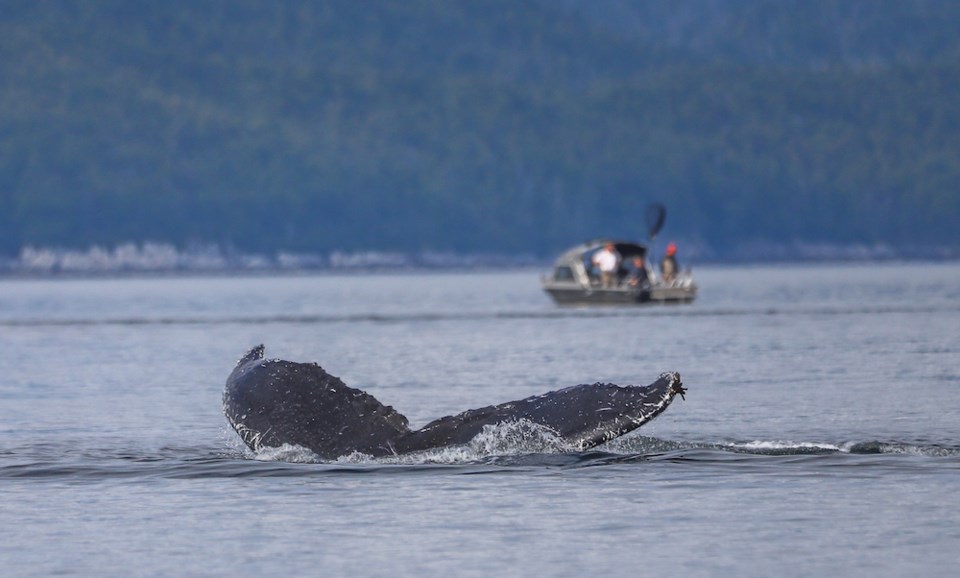Is there anything more exciting than spotting a wild whale with your own eyes?
As summer approaches and more people head for the water, Vancouver-based not-for-profit is reminding British Columbians that rather than just documenting these exciting moments for Instagram, whale-spotters can also use their phones to relay sightings to conservationists and help protect the animals in real-time.
The , first launched in 2015, allows the public to easily submit reports of sea turtles, whales, dolphins, and porpoises in and around northern Washington, B.C., and southeast Alaskan waters to Ocean Wise’s B.C. Cetacean Sightings Network. was released in March of this year to allow for reports to be made from areas with unreliable cell service, such as B.C.’s north coast.
“In 2020, we saw a 20 [per cent] decrease in WhaleReport App sightings due to COVID and changes to people’s travel and boating habits,” said Jessica Scott, a whale researcher with Ocean Wise. “We’re asking the public to help us make up for last year by downloading the app and using it every time you see a whale, whether from land or sea.”
The reminder was issued via a news release on Friday, May 21, coinciding with Endangered Species Day. Of the 25 species of cetaceans and sea turtles that frequent the waters off B.C.'s coast , 11 populations are officially .
"All face multiple pressures," the release explained—the reason these reported sightings are so valuable to researchers.
Perhaps most importantly, reporting a sighting through the app will also help reduce a whale's risk of being struck or disturbed by a large vessel.
“Sadly, vessel strikes are recognized as a significant source of mortality for whales”, said Dr. Lance Barrett-Lennard, leader of the Whales Initiative at Ocean Wise. “In addition, underwater noise from vessels negatively impacts a whale’s ability to find food, communicate, navigate, and care for its young. The critically-endangered southern resident killer whales inhabit southern B.C. and northern Washington waters, where vessel traffic is particularly high."
Sending a sighting through the WhaleReport app immediately triggers an alert to large commercial ships such as ferries, tankers, and tugs travelling within 10 nautical miles of the reported whale, Ocean Wise explained. Once armed with this information, ship captains can slow down or change course in an attempt to avoid the whale.
"With a few simple clicks on your phone, you can have a direct, positive impact on critically-endangered killer whales and on other whales as well," Barrett-Lennard added.
The B.C. Cetacean Sightings Network is a database comprised of more than 130,000 whale sightings, some dating back as far as 50 years. This dataset provides researchers and policy makers with critical information on the occurrence and health of cetaceans in the region, and helps inform important policymaking.
Aside from reporting the sighting through the Ocean Wise app, those lucky enough to spot a whale in the wild this summer are reminded to keep their distance
According to , people should maintain a minimum distance of 100 metres—or one full football field—from most whales, porpoises and dolphins, increasing that distance to 200 metres if the animal is in a resting position or with a calf. When it comes to killer whales, people are advised to stay a minimum of 200 metres away at all times, or 400 metres in southern B.C. coastal waters.
While observing marine mammals, never attempt to feed them; swim, dive or interact with them; change directions quickly or stop your boat in their path, or trap the animal either between a vessel and the shore, or between a vessel and other vessels.




